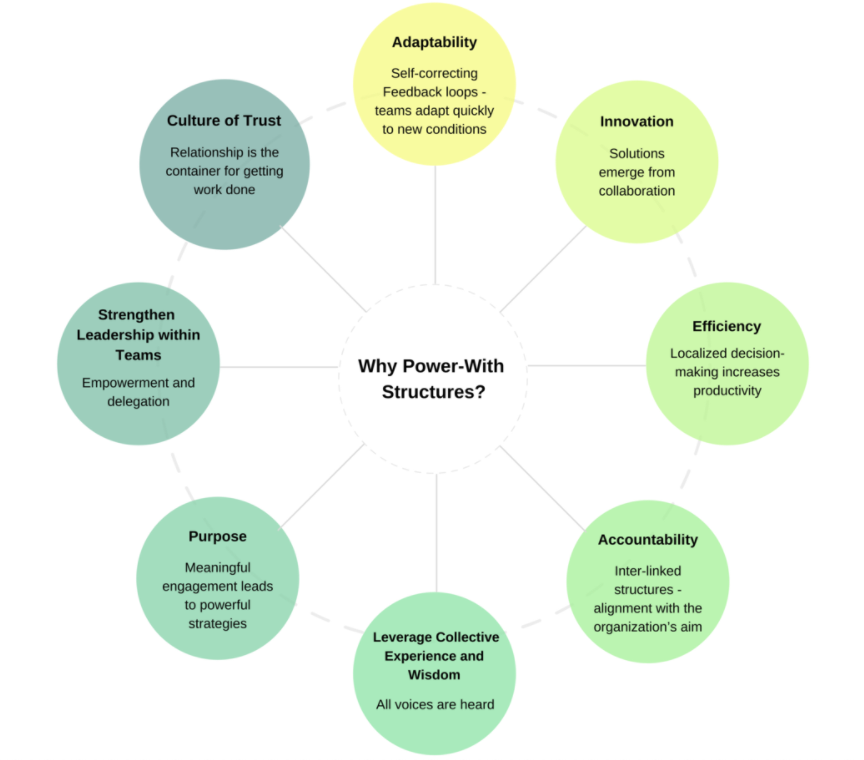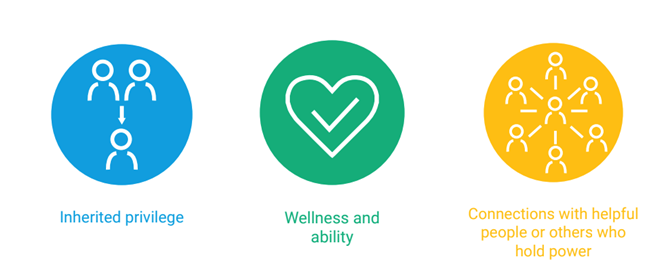PartnersGlobal’s Resiliency+ Roundup – July 2021
July 23, 2021
We continue to be grateful for all the wonderful and inspirational resources being produced by such thoughtful colleagues around the world that can support civil society’s resiliency efforts. Here are some of our recent favorites, from systems design frameworks to insights on behavioral change during times of uncertainty in the nonprofit sector. We hope these resources we’ve curated for our July Resiliency+ Roundup help you reflect on and reshape your personal and organizational resiliency journeys.
Check out the resources, organized by the seven reinforcing factors of organizational resiliency in the PartnersGlobal Resiliency+ Framework.
We have also pulled the top resiliency tweets this month for a quick way to plug into the resiliency conversation. See below!
Top Resiliency Tweets
1. Annie Neimand asks about the use of #storytelling in movements:
2. The Franklin Project is leveraging Twitter to solicit music and create a playlist that inspires individual citizens to rise up for democracy. What inspires you to engage in civic participation?
3. What are the necessary ingredients to sustain a sense of community?
Resiliency Resources by Factor
Business Acumen
Does it always make sense to set up a nonprofit organization, as opposed to social impact business or other organizational models? Joan Garry asks this question in her recent podcast episode, Choosing the Right Nonprofit Business Model (with Rinku Sen). Garry is the former Executive Director of GLAAD and currently the Principal at Joan Garry Consulting where she provides coaching and strategic guidance to nonprofits to help them better pursue their missions.
Google’s Chief Innovation Evangelist, Frederik Pferdt, and IDEO CEO Tim Brown recently came together for a Creative Confidence series to discuss how they foster creativity within their organizations. They touched on themes from Tim’s Leading for Creativity course, which Frederik recently completed, and the importance of inclusion, psychological safety on teams, and empowering people with confidence in their creativity and the courage to act on their ideas. Listen to their conversation here.
Situational Awareness
Check out this new Scenario Canvas from Systems Innovation. “This canvas will help you get started with developing future scenarios. Scenario planning is a structured way for organizations to think about the future by creating a set of scenarios that are based upon current trends. Scenarios present alternative futures that together capture the most relevant uncertainties and driving factors.”
And in Stories, Scenarios, Exploratory Talk, and Futures Thinking, we are asked to consider the idea of engaging in “exploratory talk” to help generate new ideas and innovation about the future instead of “presentational talk” which focuses narrowly on problem-solving in the present.
Engaging the Narrative
In Systems Language for Narrative Power, Executive Director for the Narrative Initiative Rinku Sen reflects on the common use of the term “systems” and how our narratives around the term should empower people’s ability to drive change, not the other way around. She posits,
How we communicate about systems influences people’s ability to hold and use system-changing narratives. To change systems we need many people to hold and use shared stories about their ability, intention and vision to change systems.
Better understanding and measuring progress is an important part of strengthening narrative change strategies. The Measuring Narrative Change: Understanding Progress and Navigating Complexity brief offers insights into some of the questions facing practitioners, funders, and others interested in measuring this kind of work.
Systems Innovation also recently published a new guide called, Narrative Making for Systems Changers. The guide explores the role of narrative in systems change initiatives and offers insight into the different components of systems stories.
Resiliency Ethos
The psychological safety of an organization’s people is critical to its ability to function in the midst of changing and fluid environments. But how often do we stop to ensure that as an organization, we are creating the conditions to support the psychological safety of our staff? Leveraging resources from the health sector can help. A practical guide to the art of psychological safety in the real world of health and care offers insights and guidance that can be adapted to the nonprofit space. It offers an explanation of what psychological safety means, key elements to building psychological safety, and how to consider inclusion and diversity when creating conditions to protect the psychological safety of staff.
Legitimacy
News flash – listening to your constituents and receiving feedback openly matters, and not just for your organization’s reputation to its beneficiaries or populations that it serves. It matters also more and more to funders. “Leading foundations increasingly value nonprofits that have strong feedback practices. They want to support organizations that actively solicit—and act on—feedback.” Read more about how your organization can improve its listening and feedback practices in this recent blog post from Charity Navigator.
Adaptive Capacity
“As we witness the breakdown of our systems and structures, the question of how to move forward is more pressing than ever. We are being squeezed into rapid change that demands a response. There’s no more waiting until “someday” or continuing with business as usual,” reflects Bernadette Wesley in this piece titled, Crossing the Chasm without Burning Out: Leadership in the New World. She explores the idea of “power-with” structures to drive a more flexible and inclusive leadership approach in the future. Power-with structures include the following elements:

Leading Futurist Lea Zaidi shares her knowledge on how to best prepare for all possible futures, today – so that you can start building your futures-thinking skills to navigate the uncertainty ahead:
Connectedness
In this podcast episode with Ezra Klein of the New York Times, Sarah Schulman ponders how social movements can become more effective by embracing dissensus rather than striving for consensus.
Learn how to play the Powerplay Game in What can a game teach you about power? Turns out, quite a lot. The Powerplay Game helps players understand their collective responsibility and the possibilities to shift power balances. In the game, each player gets a set of 10 power cards (which acts as assets in their “power inventory”) that are prominent in Western societies. These include things like:

Then you navigate different scenarios based on the cards you have. Read about the author’s experience and what they uncovered about explicit and implicit power dynamics, cultural and geographic factors!
